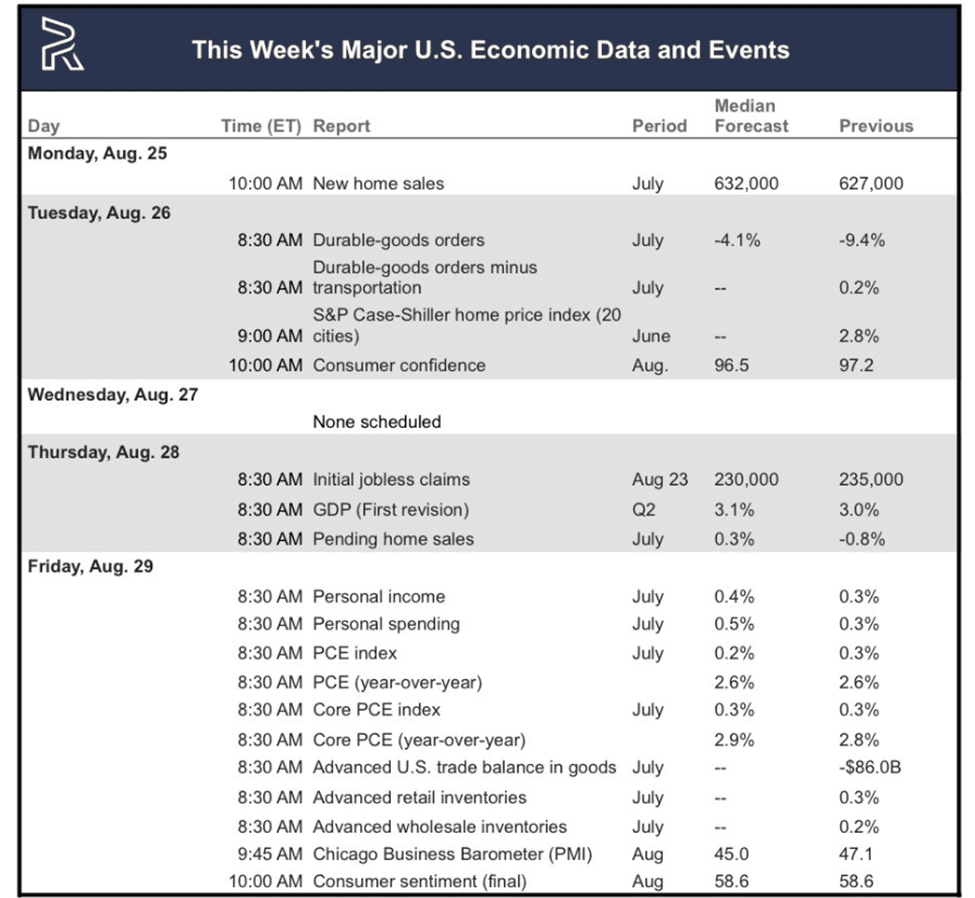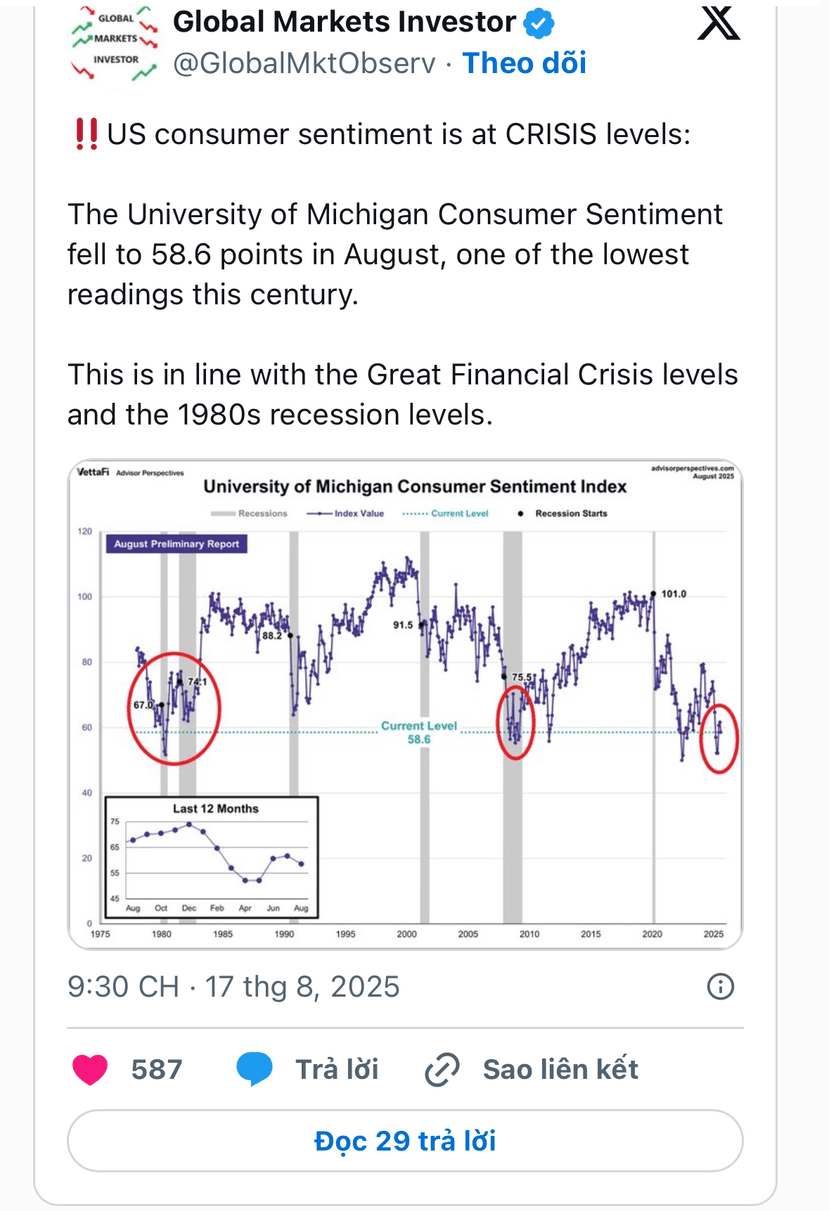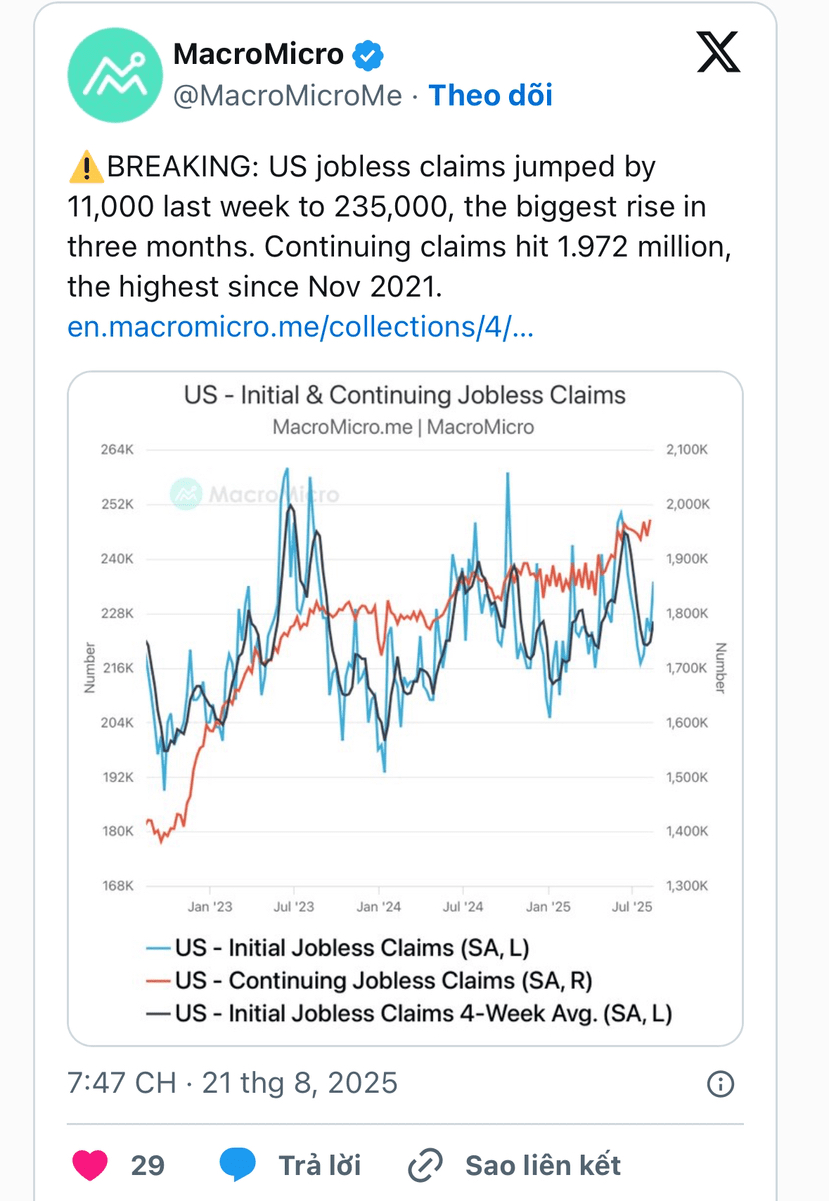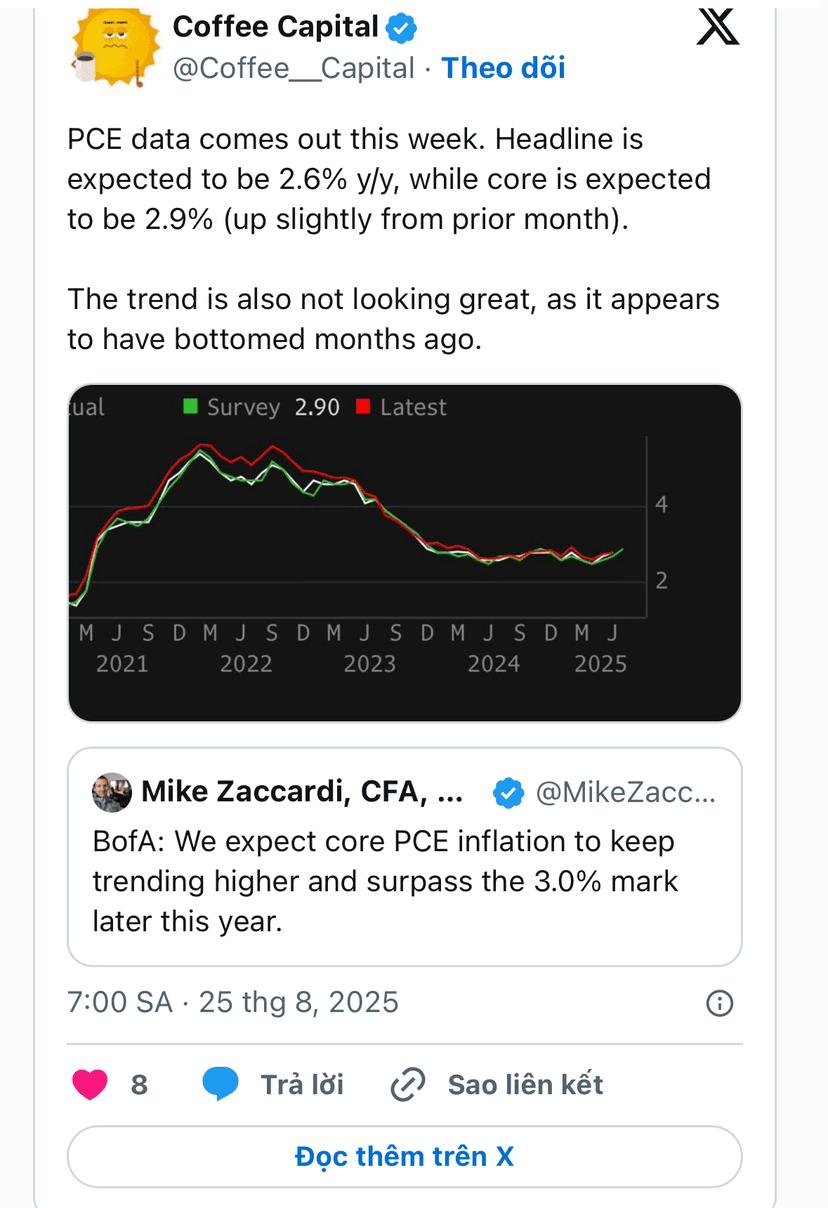Cryptocurrency traders are focusing on three important economic signals from the U.S. this week. After a quiet weekend, this data is seen as a factor that could shape Bitcoin's trajectory in the short term.
Alongside the rising wave of expectations around Ethereum, the market cannot overlook the impact of macroeconomic information. In fact, moves such as Fed Chair Jerome Powell's speech at Jackson Hole last Friday have been significant enough to noticeably change investor sentiment.
U.S. economic events this week
As the cryptocurrency market enters a sensitive phase, traders need to pay special attention to a series of important economic data from the U.S. this week. These signals not only directly affect interest rate expectations and global flows but could also significantly impact the price volatility of Bitcoin, Ethereum, and many other altcoins.

Consumer confidence and sentiment
This week, two important reports on U.S. consumer sentiment will be released, promising to provide many directional signals for the market.
According to Market Watch, economists forecast that the Consumer Confidence Index for August (to be released on Tuesday) will slightly decrease to 96.5, down from 97.2 in July. By Friday, the Consumer Sentiment Report is expected to remain unchanged at 58.6 – one of the lowest thresholds this century, reflecting deep pessimism among American households.
Weakening confidence means declining purchasing power, putting pressure on risk assets, including cryptocurrencies. Similarly, a gloomy sentiment index often reinforces fragile economic prospects, making global risk appetite more cautious.

However, the impact from economic data can unfold in two directions. In the case of weaker-than-expected data, the market will increase bets on the Fed's potential easing of monetary policy, indirectly providing support for Bitcoin and digital assets.
Conversely, if the data exceeds expectations, U.S. stocks typically benefit first, while short-term capital may risk leaving the crypto market. Therefore, these indicators become important measures that shape investor risk appetite and directly affect the trajectory of Bitcoin as well as the entire crypto market in the short term.
Initial unemployment claims
Another noteworthy economic signal this week is the number of initial unemployment claims in the U.S. – data often considered a measure of the labor market's health, thus indirectly affecting the outlook for Bitcoin and risk assets.
In the week ending August 16, 235,000 American citizens filed for unemployment benefits. Experts forecast that this number will slightly decrease to 230,000 in the week ending August 23.
However, the employment picture is not entirely positive. Reports indicate that the number of ongoing unemployment claims remains high – the highest since 2021 – suggesting that many unemployed people are taking longer to find new jobs.

This development opens up two notable scenarios. If new unemployment claims drop sharply below 235,000, the market will view this as a sign of recovery in the labor market, thereby reducing expectations that the Fed will soon cut interest rates – a factor that could pressure Bitcoin's short-term upward momentum.
Conversely, if claims continue to rise, it indicates deeper fractures in the economy, reinforcing recession fears while potentially boosting confidence that the Fed will be forced to ease policy, thus supporting sentiment towards risk assets. This divergence makes the cryptocurrency market particularly sensitive to U.S. labor data, as investors must always weigh growth expectations against recession risks and potential liquidity risks.
PCE – An important measure of inflation
Another economic data point from the U.S. that the market needs to pay special attention to this week is the Personal Consumption Expenditures (PCE) Index – a measure that directly reflects Americans' spending on goods and services and is the Federal Reserve's (Fed) preferred inflation index.

According to MarketWatch, economists forecast that the overall PCE for August will increase by 2.6% compared to the same period last year. Notably, core PCE – excluding energy and food – is projected to rise by 2.9%, slightly above the 2.8% in July.
A core PCE index remaining at such a high level implies that inflation remains 'stubborn,' thereby reducing the likelihood that the Fed will soon cut interest rates. This could put pressure on the cryptocurrency market in the short term as liquidity conditions tighten.
However, on the flip side, persistent inflation may reinforce the argument that Bitcoin is a long-term hedge against currency devaluation – thus helping this asset maintain its appeal to institutional investors.
